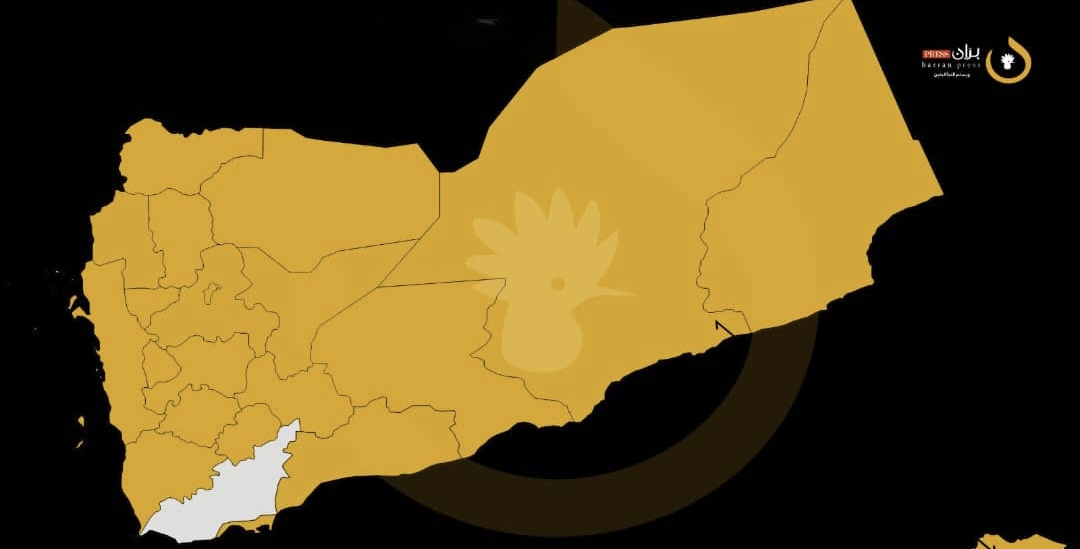
Barran Press
The struggle against the Imamate in Yemen was not limited to male revolutionaries; many women emerged as formidable figures long before the September 26, 1962, revolution. Among them was "Tohfa Said Sultan al-Shar’abi," a symbol of courage and resistance against Imam Ahmed’s rule in Taiz Governorate, located 256 kilometers south of Sana'a.
In the 1940s, Tohfa became prominent for her opposition to the heavy taxes imposed by Imam Ahmed and other forms of injustice affecting the local population. Born in the village of Hubal in the Shar’ab al-Salam district, she was known for her strong personality and unique presence, characterized by determination and a refusal to submit to any authority.
According to those who knew her, Tohfa enjoyed widespread popularity among the local community. She built close relationships with everyday people, which positioned her as a revolutionary leader against the oppression of the Imamate.
The Beginning of the Struggle
Tohfa's revolutionary activities gained national attention as she openly confronted Imam Ahmed, who was the governor of Taiz at the time. Her grandson, Nayef al-Haidari, recounted that she led a national movement against the Imamate's oppressive policies, including a social campaign against discriminatory customs that denied women their inheritance rights. This activism earned her increasing influence in Shar’ab, as her bravery and refusal to accept injustice demonstrated the impotence of the Imamate's enforcers against her.
Despite attempts to undermine her influence, Tohfa succeeded in expelling the Imam’s agents and local elites aligned with him, heightening the Imam’s fears over her growing popularity.
A March for Justice
Tohfa did not succumb to the threats and intimidation from the Imamate. Instead, she demonstrated remarkable resolve. According to her grandson, she led the first-ever protest march from Shar’ab al-Salam to the Imam's residence, the "Al-Ordhi" Palace, in downtown Taiz. Covering a distance of 40 kilometers on foot, she aimed to deliver a message to the Imam about the injustices inflicted on her community.
Following her march, the Imam addressed her directly, promising to rectify the injustices carried out by his officials and to protect her property from further exploitation.
Threats and Defiance
Despite the Imam's assurances, oppressive practices resumed shortly after. Tohfa was compelled to expel the Imam's workers from Shar’ab, angering him further. He threatened her with artillery bombardment, famously declaring, “Oh Shar’ab, let the pain be known; the sound of cannons in Al-Jahmaliya.” This message became emblematic of the Imamate's violence against society, particularly women.
Tohfa understood the implications of this threat and used it to galvanize public support against the Imam. She worked with local residents to unify their efforts and cultivate the land, gaining respect for her equitable treatment of the community.
Armed Resistance
As peaceful efforts to halt the Imamate’s oppressive taxes failed, Tohfa decided to acquire weapons for herself and her supporters to protect their land. This move intensified the Imam's animosity toward her, as she was seen as a significant threat to his revenue from Shar’ab.
Her influence continued to expand, allowing her to resolve land ownership disputes and acquire new properties, which she distributed among the people.
Her presence was notably felt in the Wadi Nakhla, a vital agricultural corridor extending from Ibb through Taiz to Al-Hodeidah. Thanks to her bravery and the community's dedication to resisting tyranny, Shar’ab was liberated from the Imam's control five years before the September 26, 1962 revolution, which ultimately overthrew the Imamate and established a republican system.
In the republican era, Tohfa focused on educating the youth, and many in her community relied on her land to provide for their children's educational needs.
Tohfa passed away in December 1994, leaving behind a legacy of national and social contributions that solidified her status as an inspiring figure among Yemeni women and a national symbol of resistance against oppression.
Pioneering Voices for Change
Tohfa represents many Yemeni women who confronted the tyranny of the Imamate, playing crucial roles in the dawn of the republic and establishing the values of resistance against the prevailing injustice and darkness.
Historical sources recall Atika al-Shami in Sana'a as one of the prominent female revolutionaries, who led the first women’s demonstration against the Imamate in 1961, advocating for the establishment of a girls' school. Other women, such as Da’ra bint Said Thabet, stood against the oppression of Imam Yahya in Sana'a and his son Ahmed in Taiz, both of whom epitomized the final chapter of the Imamate characterized by hunger, ignorance, and disease.
Sparking the Revolution
Regarding the role of Yemeni women in the liberation from tyranny and colonialism, journalist Najm al-Mariri stated, “History holds onto women who ignited the spark of revolution in both the north and the south.” He cited Tohfa as an example from the north, while many female figures opposed occupation in the south, including Dahra, who fought alongside the liberation army in the Radfan area after participating in the September 26 revolution.
Al-Mariri added that “Yemeni society is inherently tribal and familial, and since women play a vital role within the family, the birth of the revolution reflects their pivotal role in shaping its very foundation.”
A Continuous Legacy
For decades, the revolutionary and national role of Yemeni women has continued to rise, with numerous female figures embodying the spirit of resistance against the Imamate, both in its historical form of the Mutawakkilite Kingdom and its modern manifestation in the Houthi movement.
Since the Houthi coup and their takeover of the capital, Sana'a, in late 2014, the group has sought to impose strict restrictions on women, curtailing their freedoms and political and social roles, leading to the arrest of many.
These restrictions and violations, according to observers, have stripped Yemeni women of many of the gains achieved over the past five decades. In the last decade, numerous women have emerged to confront these violations, supporting the struggle of armed forces and popular resistance to end the Houthi coup and restore the Yemeni state.
Given their strong roles within families and communities, Al-Mariri noted that women are “among the groups most feared by the Houthis, who respond to them with repression.” He argues that the violations faced by women in Houthi-controlled areas likely exceed those experienced by other groups.





